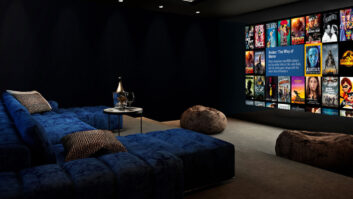As a movie lover, I always try to watch the Academy Award winning movies for Best Cinematography and Best Sound Mixing as they often look and sound terrific in a well-designed home theater, and can make for terrific demo material.
While this post is a bit late in coming, I recently re-watched the recent winning films a couple of times and thought I would share some highlights you can use for your own enjoyment or mine for some good demo material.
First up is the winner for Best Sound Mixing, Hacksaw Ridge. Hacksaw also took the statue for Best Film Editing and was nominated for Best Sound Editing, which it lost to Arrival.

Hacksaw tells the true story of Desmond Doss, a WWII U.S. Army medic who enlisted voluntarily but refused to carry a weapon as a conscientious objector on religious grounds. Doss wanted to serve his country, but “while everybody else is taking life, [he is] going to be saving it.” Doss shows superhuman strength and heroic bravery in the face of horrifying combat during the battle of Okinawa, saving the lives of numerous wounded soldiers. He went on to be the first American to receive the Medal of Honor without firing a shot.
Mel Gibson is no stranger to massive, epic war battles scenes. From Braveheart, to We Were Soldiers, to The Patriot, to Apocalypto, to Gallipoli, to the original Mad Max films, Gibson has either been in front of or behind the camera for some of Hollywood’s biggest battles, and he clearly used that experience directing Hacksaw Ridge.
This film features an incredibly powerful and aggressive Dolby Atmos mix that totally immerses you in the onscreen action. Even during the non-battle scenes, such as the opening when the young Doss brothers are outside hiking, the film is filled with ambient sounds that establish the scene. Be advised, that while this features absolutely reference caliber audio material, especially throughout its second half, the accompanying video is frequently quite brutal. Think worse-than-the-beginning-of-Private-Ryan-brutal. To quote Kaleidescape’s description of the movie, Hacksaw is “Rated R for intense prolonged realistically graphic sequences of war violence including grisly bloody images.” So, definitely preview this before firing it up for a demo and use a big handful of discretion on choosing who to play this for!
Meet Sergeant Howel:l Chapter 4, 29:30 to Chapter 5, 34:18
This is a more PG-version of Gunny’s famous barracks scene from Full Metal Jacket, which I selected less for its audio prowess and more for its sheer entertainment value. Sergeant Howell, played with wry humor by Vince Vaughn, recalls a bit of his character, Trent, from Swingers. All he needs to do is tell someone they’re so money they don’t even know it. Even without explosions and gunfire, notice the subtle audio details in the scene; the sounds of Howell’s boots on the wood floors, the cadence of jogging soldiers and driving jeeps way off screen, and a plane that flies overhead. As the scene cuts to the outside, you hear many of the same sounds, but you are clearly transported to an entirely different audio space.
First Assault: Chapter 9, 1:08 to Chapter 10, 1:24
There are several major, lengthy battle scenes during the second half of the film, all of them featuring terrific audio moments, however I’m going to highlight the lengthy first battle as it is slightly less brutal than the others and features audio from the off-coast shelling from the battleships.
Notice the subtle sounds as this scene begins: the boot steps crunching on gravel, the jingling of canteens and helmet straps, the rustling wind above. It all works to set the perfect stage for the devastation that is about to come. When it cuts to the battleships, the volley of rounds will shake your room, and you’ll hear the large rounds whistling overhead and then exploding on the ridge. Flames cascade and burst around the room, shrapnel spins and whizzes past your ear. This scene is loaded with tension as the squad crests the ridge and starts slowly advancing, looking for enemy contact. You’ll hear breathing and movement all around you, flies buzzing, fires crackling, and wind rustling as the men cross a valley filled with the horrors of war, waiting their turn for battle.
The serious fighting starts abruptly — and shockingly — at 1:13:08 and for the next 10-plus minutes the entire room is assaulted with a fusillade of weapons fire coming from all locations. You’ll clearly hear bullets firing from all points of the room and tracer rounds zipping past your head, rounds splintering into walls, and the entire room transformed into a 360-degree battlefield. The sound designers did a terrific job of capturing the different sounds for each weapon, letting you track single shot rifles, automatic weapons, and heavy machine guns. Also, if you’ve ever played “Call of Duty,” you’ll recognize the M1 Garand’s empty clip sound as soldiers fire the last round in their magazine. Throughout the scenes, mortar rounds whistle overhead, creating explosions that throw up dirt, rock, gravel, and limbs that rain and cascade all around the room. Pay attention to the sound of the Japanese mortar launching at 1:21; it makes a unique sound, and later in the scene, you will hear this mortar launch sound from weapons fired off screen, right before an explosion, a terrific example of sound being used to depict more about what is happening off screen. While grisly, the flame thrower near the end of the scene washes the room and ceiling in flames.
Next up, I’ll discuss some of the best moments from the Best Cinematography winner!







